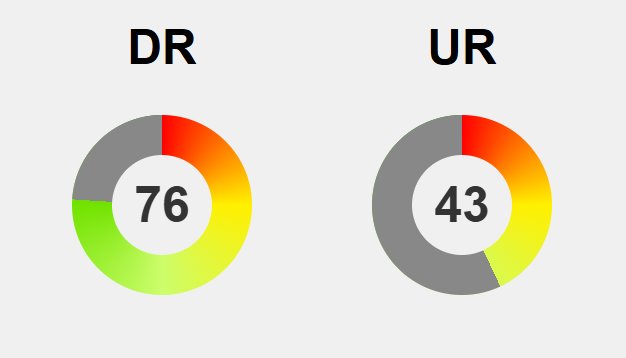Keeping your summer tires in top shape is essential for safe, smooth driving as temperatures soar. But what simple steps can you take to maximize their lifespan without sacrificing handling or control? This guide reveals how proper tire maintenance—such as regular pressure checks, tread inspections, and correct alignment—can significantly extend tire life and enhance safety on hot, unpredictable roads. Are your driving habits contributing to faster wear, or are you proactively protecting your investment? As technology advances, future innovations like smart sensors and eco-friendly materials promise to revolutionize tire care, making maintenance easier and more effective. Understanding these evolving trends raises a pivotal question: how can you stay ahead of tire wear and hazards while enjoying peak performance? Ultimately, thoughtful, consistent care ensures every mile remains safe, cost-effective, and confident—because effective summer tire management isn’t just about longevity; it’s about safety and peace of mind.

Essential Summer Tire Care for Safer, Smoother Rides
Summer tire maintenance might not be the most glamorous part of owning a vehicle, but it’s essential for safe and smooth driving during the warmer months. As temperatures rise, your tires are put under increased stress—they need to provide reliable grip, handling, and control on hot, often unpredictable roads. Proper care isn’t just about keeping your tires looking good; it directly impacts your safety, especially since hot pavement can accelerate tire wear and raise the risk of blowouts or loss of traction.
Understanding the unique design of summer tires helps explain why maintenance is so important. These tires use rubber compounds that stay flexible at higher temperatures, offering better grip on dry and wet surfaces compared to all-season alternatives. Their tread patterns are optimized for maximum contact with the road, which enhances cornering and braking. Well-maintained tires respond more precisely to steering inputs and help you stay in control, even on slick or uneven roads.
Regular tire care also extends the lifespan of your investment. Simple tasks like checking tire pressure, inspecting tread depth, and ensuring proper alignment can catch early signs of uneven wear, cuts, or punctures. Addressing these issues early reduces the chances of dangerous blowouts and keeps your tires performing safely. Because hot weather can cause under- or over-inflation, maintaining the right pressure is vital for safety and optimal handling.
Routine inspections should become a habit. Visual checks for cuts, embedded debris, or sidewall bulges are quick but crucial. These small issues can develop into serious problems if ignored, especially in summer’s heat, which makes rubber more susceptible to cracking. Keeping an eye on tread depth with a simple gauge or even a penny ensures your tires aren’t worn down to unsafe levels, helping prevent hydroplaning and improving wet traction.
Maintaining correct wheel alignment and balancing is equally important. Misaligned wheels lead to uneven tread wear, which shortens tire life and diminishes handling. Properly balanced wheels prevent vibrations that can cause uneven wear patterns. Regular checks and adjustments keep your tires in top shape, ensuring they respond predictably and safely when you need them most.
Finally, proper storage when not in use helps preserve your tires’ condition. Keep tires in a cool, dry place away from direct sunlight and chemicals, and store them upright whenever possible. This care preserves the rubber’s integrity, ensuring your tires are ready for another season of safe, confident driving. Staying attentive to these simple maintenance steps keeps your summer tires performing at their best, mile after mile.
Main Factors That Influence How Long Your Summer Tires Last
The lifespan of your summer tires isn’t determined solely by how often you drive; a range of factors play a role in how long they last and how well they perform over time. One of the most significant influences is your driving style. Aggressive acceleration, sudden braking, and sharp cornering put extra stress on tires, accelerating tread wear and increasing the risk of sidewall damage. Conversely, smooth and predictable driving minimizes these stresses, helping your tires stay in better shape longer and maintain their safety margins.
Routine maintenance is essential for extending tire life. Regular rotations ensure even tread wear across all four tires, preventing premature deterioration in specific areas. Misaligned wheels cause uneven wear patterns, which can diminish handling and shorten tire lifespan. Keeping your wheels properly aligned and balanced ensures consistent contact with the road, promoting safer handling and more uniform wear. These simple steps help maintain both performance and safety while maximizing your investment.
Tire pressure is another critical factor, especially in hot weather. As temperatures rise, the air inside your tires expands, making regular pressure checks more important than ever. Underinflated tires wear faster on the edges, generate excess heat, and are more prone to blowouts. Overinflated tires, on the other hand, can lead to a harsher ride and reduced grip. Maintaining the recommended pressure ensures your tires wear evenly, handle predictably, and stay cooler under stress, ultimately prolonging their lifespan.
Environmental conditions also influence how quickly tires degrade. Exposure to sunlight, ozone, and other elements causes rubber to become brittle and crack over time. Proper storage—keeping tires in a cool, dry place away from direct sunlight—slows this process. Driving on rough roads or gravel accelerates tread wear and increases the risk of cuts or punctures. Being mindful of these conditions and avoiding aggressive driving on poor surfaces can significantly extend your tires’ effective service life.
Road hazards and load management further impact tire longevity. Potholes, debris, and uneven surfaces can cause immediate damage or weaken the structure over time. Overloading your vehicle puts additional stress on the tires, speeding up tread wear and increasing the likelihood of blowouts. Staying within your tires’ load ratings and avoiding rough terrain whenever possible helps preserve their integrity. By managing these factors proactively, you ensure your summer tires remain safe, effective, and ready to perform mile after mile.

Boost Your Tire Performance and Safety on Hot Roads
Maximizing your summer tire performance begins with simple, routine checks that keep your tires responding reliably. Before hitting the road, verify that your tires are properly inflated, as hot weather can cause the air inside to expand and lead to overinflation. Correct pressure ensures optimal grip, a smooth ride, and even tread wear, which are all vital for safe handling. Using a reliable gauge to check pressure regularly can prevent issues like uneven wear or blowouts, especially during the heat of summer.
Tread depth is another critical factor in maintaining safe control. Worn tires lose their ability to grip wet surfaces, increasing the risk of hydroplaning. A quick inspection with a penny or a tread gauge can confirm whether your tires still have enough tread to handle rainy conditions. Adequate tread not only improves wet traction but also helps channel water away from the contact patch, maintaining safety and control on slick roads. Keeping your tread depth above the legal minimum is a straightforward way to preserve handling performance.
Wheel alignment and balancing are often overlooked but are essential for peak tire performance. Misaligned wheels cause uneven tread wear, which diminishes handling precision and shortens tire life. Regular alignment checks ensure your tires make full, even contact with the road, providing better control. Properly balanced wheels prevent vibrations that can lead to uneven wear and compromise stability. Staying on top of these adjustments helps your tires respond predictably and safely, especially during sharp turns or sudden stops.
Your driving habits significantly influence tire safety and longevity. Gentle acceleration, smooth braking, and avoiding abrupt maneuvers reduce stress on your tires and lower heat buildup—especially important in hot weather. Aggressive driving accelerates tread wear, increases the likelihood of sidewall damage, and can lead to dangerous blowouts. Adopting a calm driving style not only extends tire life but also ensures your vehicle handles confidently in challenging summer conditions. Every smooth turn and gentle stop contributes to safer, more controlled driving.
Finally, managing your vehicle’s load is crucial for maintaining tire safety. Overloading puts excessive pressure on your tires, increasing wear and the risk of failure. Always adhere to your tires’ load ratings, especially when towing or carrying heavy loads. Adjusting tire pressure accordingly and driving cautiously on rough terrain further protects your tires from unnecessary stress. These small but vital steps help your tires perform at their best, providing reliable handling and control throughout the summer.
By following these maintenance tips, you can significantly improve your tire safety during hot weather. For more detailed advice on caring for your tires, consider visiting the comprehensive guide on tire maintenance at Tire Care Tips. Staying informed and proactive helps ensure your tires perform reliably and keep you safe on the road all summer long.
Practical Tips to Keep Your Summer Tires in Top Shape
Keeping your summer tires in good shape doesn’t have to be complicated or time-consuming. Regular visual inspections are the simplest way to catch issues early. Before every trip, take a moment to look over your tires for cuts, punctures, or bulges on the sidewalls. These small problems can quickly develop into serious safety concerns, especially in hot weather when rubber becomes more brittle. Checking tread depth with a simple gauge or even a penny helps ensure your tires aren’t worn down to unsafe levels, reducing the risk of hydroplaning and maintaining wet traction.
Tire pressure is crucial, particularly in warm weather. Hot days cause the air inside your tires to expand, which can lead to overinflation if you don’t check regularly. Using a reliable gauge, check your tire pressure at least once a month and before long drives. Properly inflated tires wear evenly, handle predictably, and stay cooler under stress. Underinflated tires wear faster on the edges and are more prone to blowouts, while overinflation can make your ride harsher and reduce grip. Keeping the pressure within your vehicle’s recommended range balances safety, comfort, and longevity.
Wheel alignment and balancing are often overlooked but are key to extending tire life and ensuring safety. Misaligned wheels cause uneven tread wear, which shortens tire lifespan and affects handling. Regular alignment checks guarantee full, even contact with the road, improving control. Proper balancing prevents vibrations that lead to uneven wear patterns. Investing in these routine checks keeps your tires performing smoothly and helps you avoid costly replacements or unexpected failures on the road.
Visual checks should also include removing embedded debris like stones or glass, which can cause punctures or weaken the rubber over time. Gentle cleaning of your tires and wheels with water and a soft brush helps prevent rubber degradation. If you notice uneven wear or sidewall damage during inspections, don’t ignore it. Addressing problems early with professional help can prevent dangerous failures and save money in the long run.
When your tires are not in use, proper storage makes a difference. Store them in a cool, dry place away from direct sunlight, ozone, and chemicals that can accelerate rubber deterioration. Keep tires upright whenever possible; if stacking, do so carefully to avoid deforming the rubber. Before reinstalling, give them a visual once-over and inflate to the correct pressure. Good storage preserves your tires’ condition and readiness, ensuring they perform safely when you need them.
Small, consistent maintenance routines add up. By staying vigilant with inspections, pressure checks, and proper storage, you protect your investment and maximize your tires’ lifespan. These simple steps help prevent uneven wear, reduce the risk of blowouts, and keep handling predictable. Taking care of your tires today means safer, smoother drives tomorrow, and over time, it saves money and stress. A little effort now goes a long way in enjoying a safe, confident summer on the road.

Future Trends in Summer Tire Maintenance and Innovation
Looking ahead, the future of summer tire care is poised to be transformed by innovative materials and smart technology. Manufacturers are developing rubber compounds that last longer and perform better under high temperatures, reducing the frequency of replacements and making maintenance more cost-effective. These advancements not only enhance traction and durability but also contribute to a greener footprint, aligning with broader environmental goals.
Smart tire technology is becoming increasingly accessible, with sensors that monitor pressure, temperature, and tread wear in real-time. These devices can alert drivers to potential issues before they escalate, helping prevent blowouts and ensuring safer driving conditions. As integration with vehicle systems improves and costs decrease, proactive tire management will become a standard part of summer driving routines rather than an afterthought.
The industry is also making strides toward sustainability, with recyclable tires designed to degrade more gracefully and extend their lifespan. This shift aims to reduce waste and lessen the ecological impact of tire production, all while maintaining safety and performance standards. Such innovations promise to make tire maintenance more environmentally responsible and less burdensome for consumers.
Digital tools and mobile apps are set to become even more integral, providing personalized insights and reminders for tire checks, rotations, and replacements. These platforms can track your tire health over time, offering guidance tailored to your driving habits and local conditions. As vehicles become more connected, these tools will seamlessly integrate into your daily routine, making tire care effortless and more precise.
Finally, as electric vehicles and autonomous driving technology evolve, tires will need to adapt to new demands—handling higher torque, lower rolling resistance, and longer distances without compromising safety. Future tire designs will focus on balancing these technical requirements with safety and handling, ensuring that summer tires meet the needs of tomorrow’s driving landscape. Embracing these trends now helps drivers stay ahead, enjoying safer, more reliable summer journeys with less effort and greater peace of mind.






